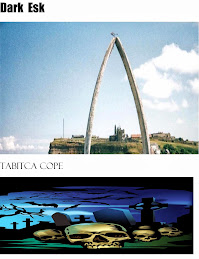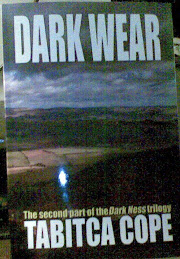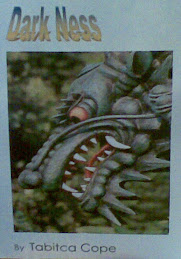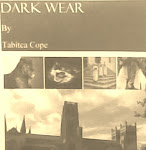Flixton is a village about 5 miles south of Scarborough on the North Yorkshire coast. It would have been quite isolated many years ago and it is still a quiet place .Tales of a werewolf in the area go back centuries.
In 940 AD a hostel was
built there for the protection of
travellers. The werewolf had reportedly attacked sheep and local people as well as travellers.
Even freshly buried corpses were dug up and partially eaten, and anyone out alone
risked being attacked.
Reports stopped until
1150 when a shepherd and a girl and some farm animals were reportedly attacked
and even eaten.The werewolf was reported as having a bad smell and walking on
its hind legs and having a very long tail..
It went quiet again
until 1800 then a carriage travelling to York was attacked just
outside Flixton by a large wolf like creature .The driver was attacked and one
of the travellers shot at the creature. However it survived and ran off.
A Ghost Hunter's Road Book, by John Harries published in 1968 described a creature in the area , “A fearsome beast, equipped with abnormally large eyes and exuding a terrible stench, the animal is supposed to fell nocturnal wayfarers with its tail, which is almost as long as its body. The eyes are crimson and dart fire”.
A Ghost Hunter's Road Book, by John Harries published in 1968 described a creature in the area , “A fearsome beast, equipped with abnormally large eyes and exuding a terrible stench, the animal is supposed to fell nocturnal wayfarers with its tail, which is almost as long as its body. The eyes are crimson and dart fire”.
In the early 70's
more sightings were reported in the Flixton area. Locals
said a truck was attacked when a huge wolf like creature jumped on the front
and tried to bash its way through the windscreen.
A sighting of
something strange was reported in 1985, by local youngster Richard Perkins. He describes how he was out playing with friends when they saw what they thought was a dog in the field above. One boy went to fetch some binoculars. He was a long time but they kept watching the beast until he got back. They described it as big dog-like
thing but it didn't look like a dog, it looked like a cat, a 'dog cat' they thought. Richard Perkins had asked his father about what they had seen and his father told him that when keeping exotic
pets became illegal, people chucked them out into the wild. We thought this is
what it could be, a 'chucked-out big cat'! . Locals said
it was the werewolf.
In 2016, a story was widely reported in the media about a creature which was seen near the market town of Beverley, about 25 miles south of Flixton. There were at least seven sightings reported of a creature described as 'half man, half dog' which stood upright on its hind legs, then dropped down and ran on all fours before jumping 30 feet ( 10 metres)over the Barmston Drain drainage canal. It was reported to be at least 8 feet tall (2. 7 metres ) and covered in shaggy hair. Locals had a hunt for it but it was not found.
In 2016, a story was widely reported in the media about a creature which was seen near the market town of Beverley, about 25 miles south of Flixton. There were at least seven sightings reported of a creature described as 'half man, half dog' which stood upright on its hind legs, then dropped down and ran on all fours before jumping 30 feet ( 10 metres)over the Barmston Drain drainage canal. It was reported to be at least 8 feet tall (2. 7 metres ) and covered in shaggy hair. Locals had a hunt for it but it was not found.
So is Flixton the home of a family of werewolves?
There would have to be a gene passed on each generation for it to be around
this long, at least 1000 years .John Harries book also mentions a magician, a
shape shifter in the area.There would have been wolves in the area centuries
ago but wolves have not been around in modern times except at the zoo. There is
a zoo near Scarborough that has been there about 60 years in some form or
another . ( I visited it as a child and I am in my 60s)Could some of the
sightings be an escaped wolf or big cat? Either way an interesting history of
events. If you go that way keep a sharp eye open !




















